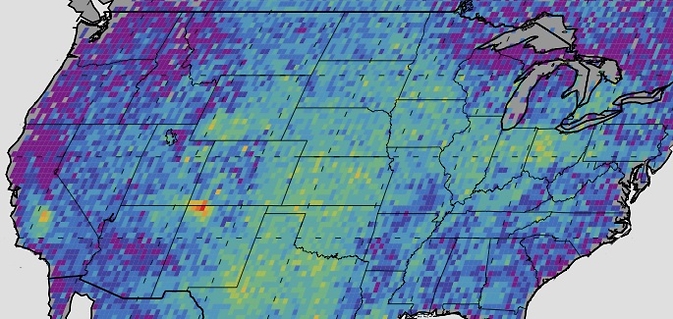NASA now says massive methane cloud over U.S. Southwest is legitimate
Several years ago, NASA scientists discovered a cloud of methane gas over the Four Corners of the American southwest that measured about the size of Delaware. The unusually high readings were dismissed then; however, a new study today confirms that the methane hot spot is legitimate.
“We didn’t focus on it because we weren’t sure if it was a true signal or an instrument error,” said NASA research scientist Christian Frankenberg, who works in NASA’s Jet Propulsion Laboratories in Pasadena, California.
The Christian Science Monitor website states that a 2,500 square mile methane cloud over the region where Colorado, Utah, New Mexico, and Arizona connect traps more heat in a 1-year period than all of Sweden’s annual carbon dioxide emissions.
To provide an overview of gases that endanger the Earth’s atmosphere, methane gas is the most powerful of the greenhouse gases. Carbon dioxide is another greenhouse gas, and is more abundant in our atmosphere. However, methane is more effective at trapping heat in the atmosphere than carbon dioxide.
A new study published 10 October 2014 in the journal Geophysical Research Letters takes a look at the data discovered several years ago and confirms what we now know to be North America’s largest methane hot spot. According to lead author of the study, Eric Kort, a professor of Atmospheric, Oceanic, and Space Sciences at the University of Michigan in Ann Arbor, Michigan, the source of the methane is from extensive coal mining activity in the San Juan Basin. According to Kort, the Basin is “the most active coalbed methane production area in the country.”
There has been a notable increase in fracking in that region. Both Kort and Frankenberg believe that the earlier coal mining is most likely to blame for the methane cloud. From 2003 to 2009, the study shows there were 0.59 million metric tons of methane released each year — 3.5 times more than previous estimates.
According to Kort, “The results are indicative that emissions from established fossil fuel harvesting techniques are greater than inventoried. There’s been so much attention on high-volume hydraulic fracturing, but we need to consider the industry as a whole.”




Leave a Reply
Want to join the discussion?Feel free to contribute!